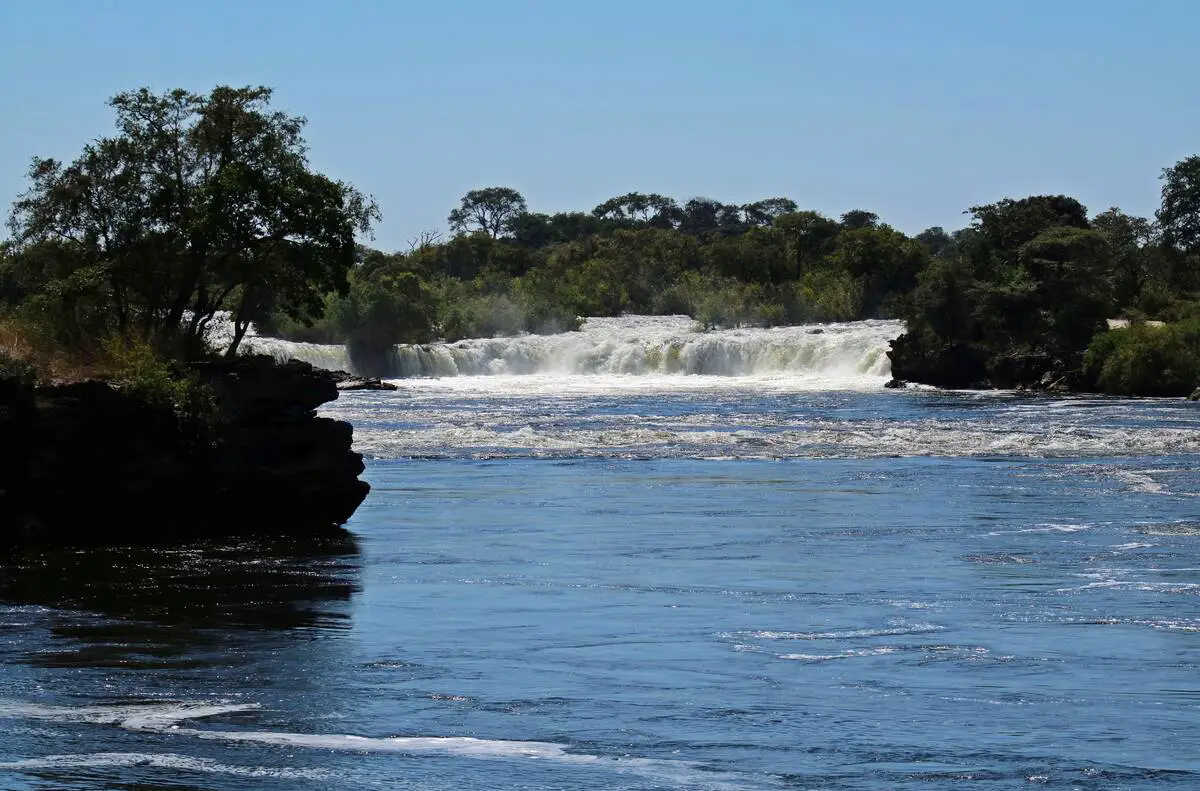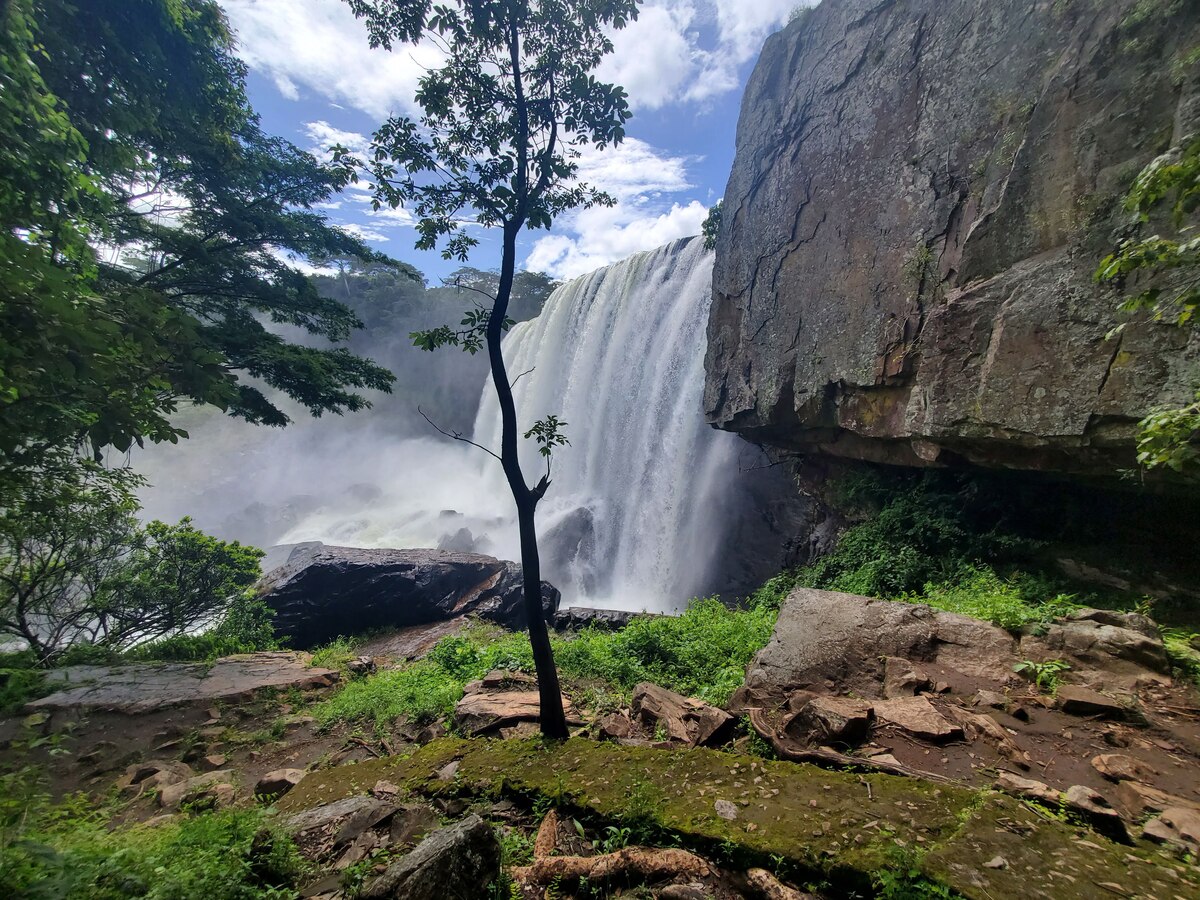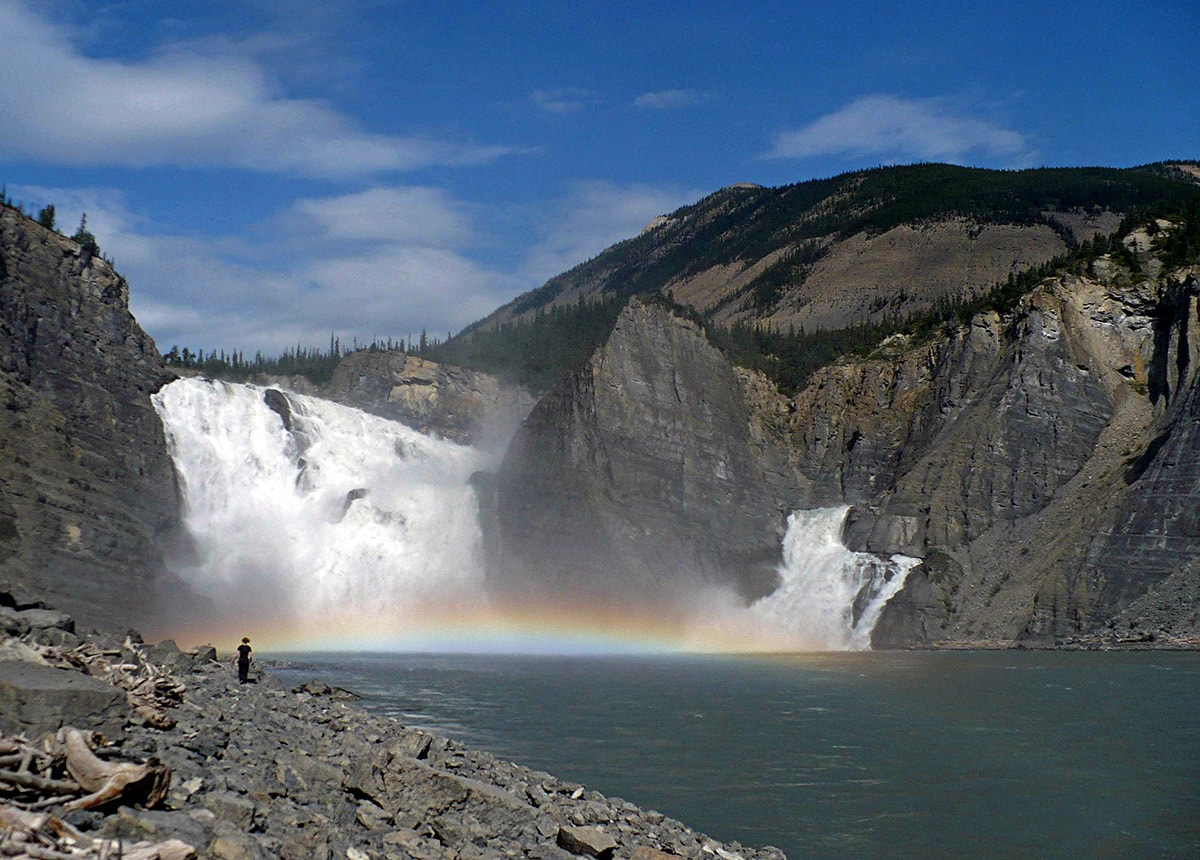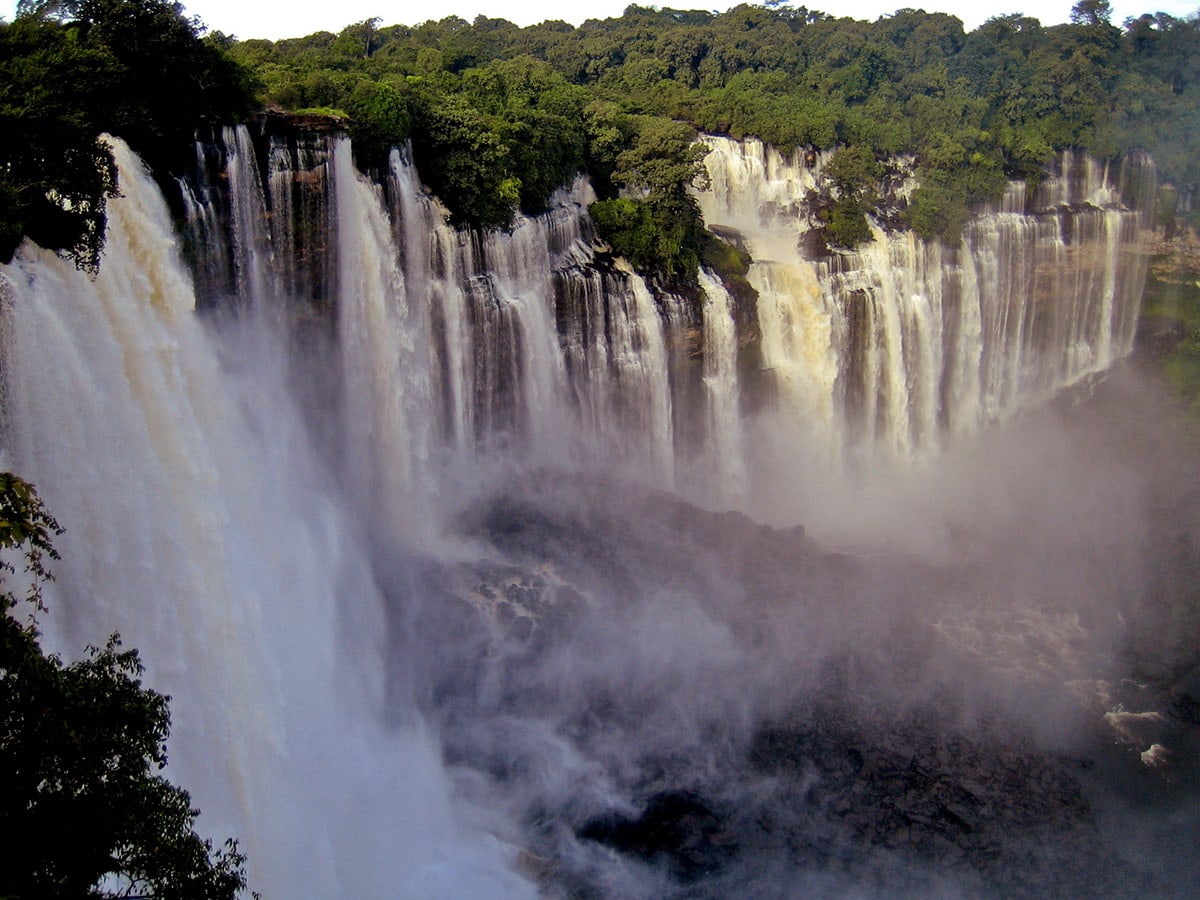Waterfalls 🢔 Geological wonders 🢔 Categories of wonders
Wonder
Ngonye Falls (N’Gonye)

 In short
In short
An enormous and rather little-known waterfall is Ngonye Falls on the mighty Zambezi River. This is an 8-20 m high waterfall – a complex system of smaller falls divided by numerous islands over the width of some 1.3 kilometers.
 44.3%
44.3%
GPS coordinates
Location, address
Alternate names
Height
Width
Flow rate
Stream
Map of the site
If you see this after your page is loaded completely, leafletJS files are missing.
 In detail
In detail

Ngonye Falls is the second-largest waterfall on the Zambezi River. It is 370 – 340 km above the much more famous Victoria Falls.
Above the falls Zambezi River flows through a sand layer of the Kalahari desert and is up to 900 m wide. As it reaches the falls, the river divides into multiple smaller streams that are divided by numerous islands. Among these islands have formed multiple smaller waterfalls. The width of the main front of these waterfalls is some 1,300 m.
In some locations visitors can stand on the massive plates of basalt and feel the force of water – the mighty stream has gnawed under the stone and the plate is trembling.
Below the first fall, the streams meet each other and drop again over smaller falls until they form a single Zambezi river again. Below the Ngonye Falls river is just some 70 m wide – the mighty stream here has been squeezed into a canyon, that has been cut into a dyke of Karoo basalt.
The first, most impressive “front” of falls is some 8-10 m high. Several smaller steps follow after this fall, bringing the whole height of the waterfall to some 20 m, but this height comes over a distance of several hundreds of meters.
The best time to see the falls is around June – July. Later until November, the stream becomes weaker. In April the flow rate is the highest, but the comparatively low falls then become less prominent.
On the left (western) part of the river a power plant is under construction.
References
- Avijit Gupta. Large Rivers: Geomorphology and Management. Wiley-Blackwell, 2022. ASIN: B09WTLJ99J
 Linked articles
Linked articles

Wonders of Zambia
Highlights of Zambia are waterfalls, including one of the greatest natural monuments of the world – Mosi-oa-Tunya or Victoria Falls. There are countless other impressive waterfalls in the country, such as Kalambo Falls, Lumangwe Falls, and many others. Another highlight is prehistoric rock art. In the country have been found hundreds of sites with prehistoric paintings and engravings. This art shows people and animals, but often also – geometric symbols.

Waterfalls
Some of the most fascinating and awe-inspiring natural monuments are waterfalls or locations where a river abruptly changes its elevation.

Wonders of Africa
Africa has many outstanding wonders and some of the most surprising ones are the heritage of Egyptian civilization, the vernacular architecture of the Sahel region, tropical ecosystems, and others.
 Recommended books
Recommended books
To the banks of the Zambezi
Bulpin transports the reader to the mystical country Rhodesia, today known as Zimbabwe. In his remarkably engaging and romantic style of writing, he tells of stories long forgotten, played out at the foot of the majestic Victoria Falls and along the banks of the Zambezi, the greatest river in Africa. As the Zambezi River twists and turns its way through the beautiful landscape, it is witness to prospecting, hunting, wars, and dreams; and hears of great men who explore the undiscovered land – heroes and villains alike.
The Zambezi: A History
The Zambezi is the fourth-longest river in Africa, and one of the continent’s principal arteries of movement, migration, conquest, and commerce. In this book, historian Malyn Newitt quotes rarely-used Portuguese sources that throw a vivid light on the culture of the river peoples and their relations with the Portuguese creole society of the prazos.


